Rachel Owen, M.Photog., signed up for a studio practices class at the Art Institute of Chicago in 2019. “I didn’t even know what I was getting into,” she says. Her friends questioned why: The co-owner of J.R. Owen and Co., in a village 30 miles southwest of Chicago, had a dozen-plus years of photography experience by then, including in a mall portrait studio and a large wedding studio. “I just had this really strong, strong feeling that I was supposed to take this class,” she says. Such serendipity has guided Owen’s career well.
She was the lone photographer in a class of painters, sculptors, and other gallery-oriented visual medium artists. The class’s teacher challenged the longtime wedding and portrait photographer to make two key shifts in her mindset: to think like an artist and to think in series of works rather than individual products. “Wow! Are things more powerful in a series,” Owen says, “and you really develop your concepts out further.”
Today, Rachel Owen, Fine Art Photography and Digital Artist, is a branch business of J.R. Owen and Co., producing, in her own words, “creative, bizarre work”—a woman stitching her torn arm with a needle and string as if her skin were ripped fabric; a boy standing on an antique ladder, painting a sunny day onto a stormy sky; a woman in a fancy gown inside an hourglass with grains of descending sand ricocheting off her upturned palm. Owen blends photographs of the minutest details to create her images in Photoshop. For a woman’s dress comprised of butterflies, Owen photographed real monarchs, printed the images, cut out the wings, pasted them onto a bottle, photographed that, and layered that image onto the model’s portrait.
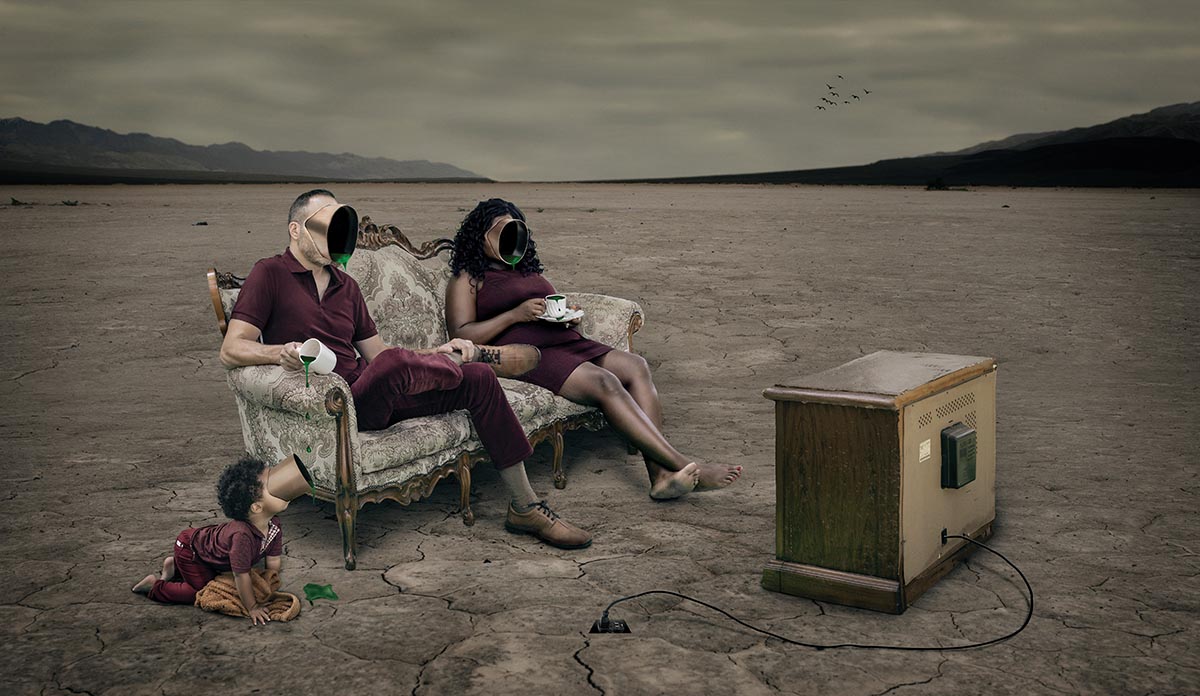
CONTRADICTORY TRUTHS
Following her teacher’s advice, Owen is creating series as long-form visual poetry. “Response” is her current magnum opus, inspired by her trip to Western U.S. deserts during the coronavirus pandemic. Incorporating an artist statement and verse interludes, “Response” is a metaphorical take on the pandemic’s social and political impact. In one image, a woman kneels in a nest atop a small tree surrounded by barbed wire, feathers floating to the ground, a vast, otherwise empty expanse of dry lakebed.
“Response” is scheduled to be published as a book this fall, followed next year by “Finding a Voice,” a series of images in which the models’ necks have been supplemented with cages containing objects representing their innermost secrets waiting to be expressed. Owen also is exploring galleries and print sales as commercial outlets for her digital artwork, and she does limited, carefully vetted commissions.
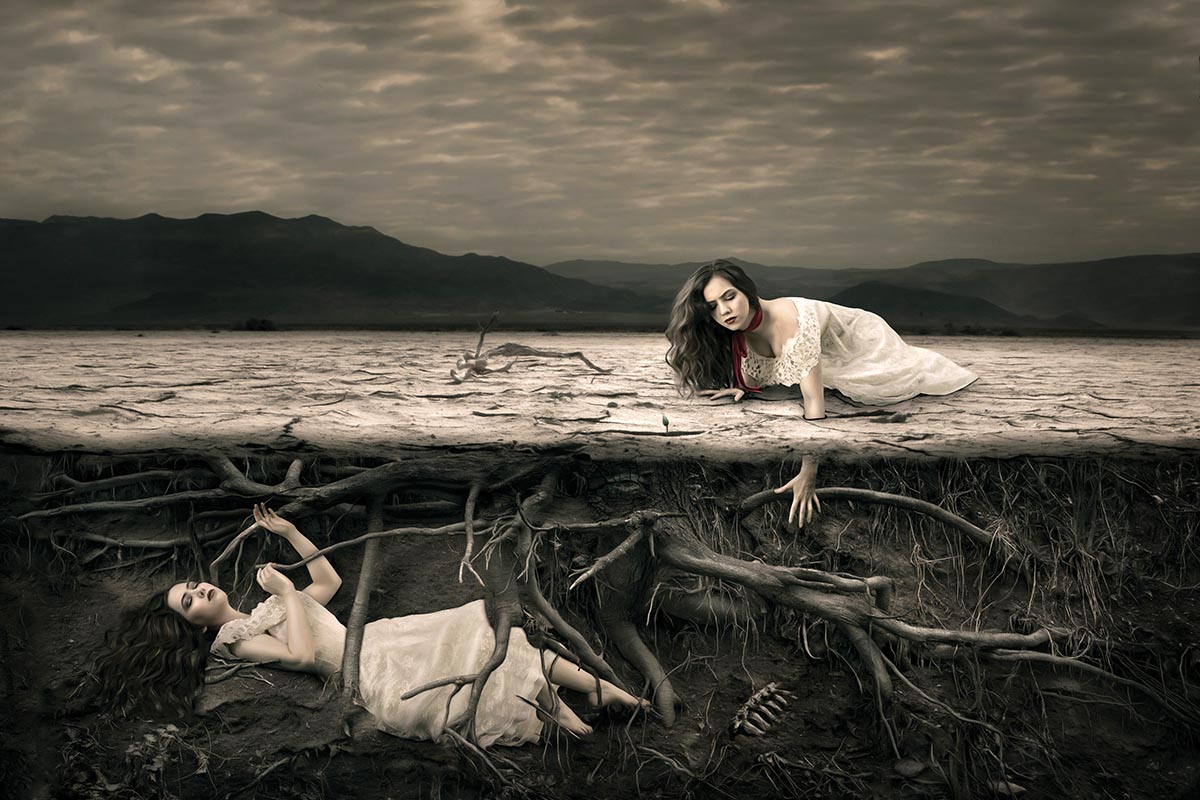
Throughout a Zoom conversation from her Lemont home, Owen presents a finely tuned business acumen, gauging the studio’s products by their hour-per-hour earnings. She recognizes that her time-consuming green screen artistry can fetch high per-unit fees but a limited range of clientele. That could mean a failing business model if sales come up one or two units short of projection.
She also struggles with balancing the work’s financial value versus its artistic purpose and personal gratification. “I’m very protective of this, and I want to keep loving it the way I do,” she says. Owen ponders this dilemma as a woman whose photography career started when she was a financially struggling single mother but can now embrace an artistic mission. She presents two conflicting maxims: “Do the thing you love, and you’ll never work a day in your life” and “There’s no faster way to kill your passion than to make it the thing you depend on to put bread on your table.”
“So, I don’t know. I don’t know,” she says. “They are both true.”
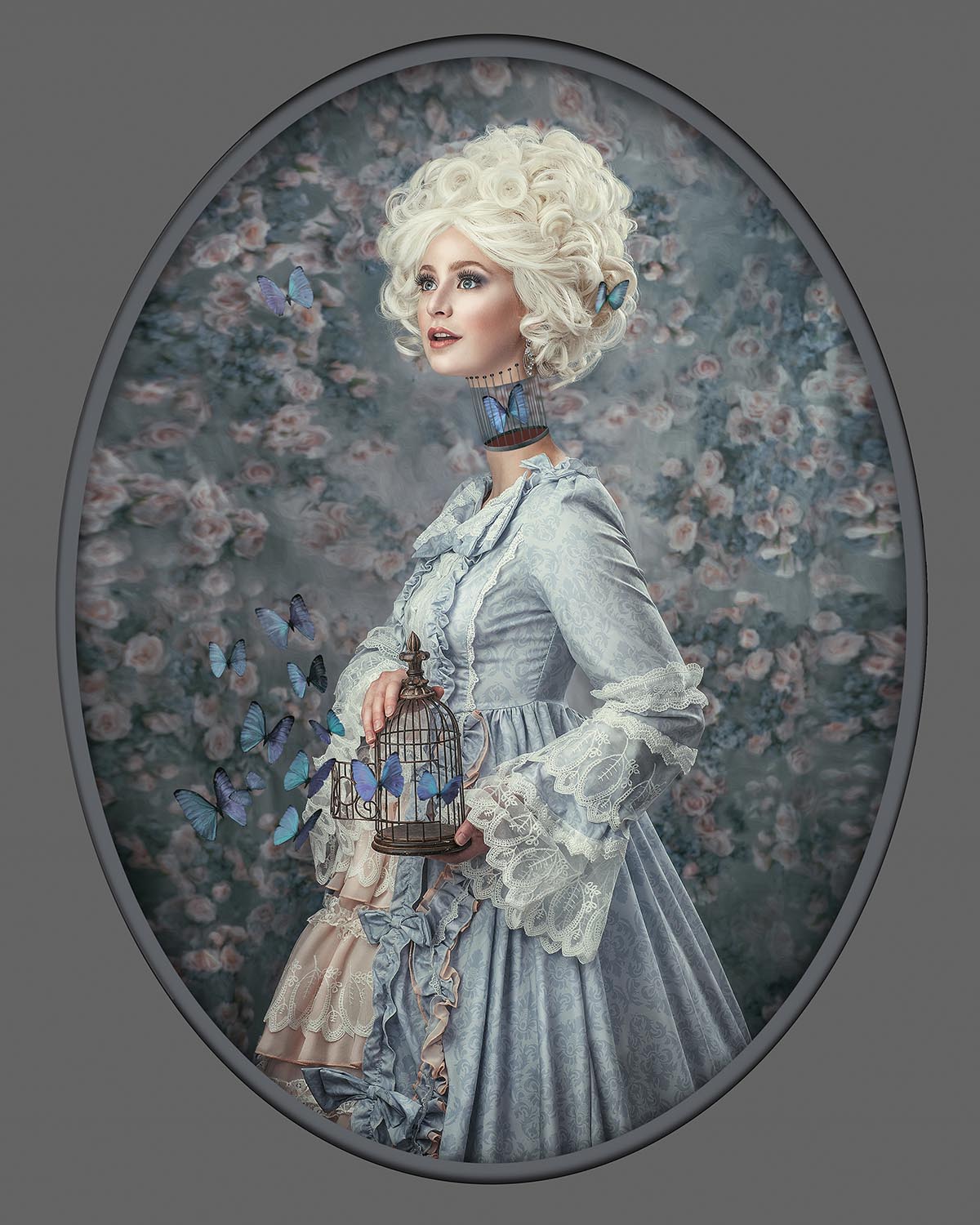
AN EDUCATION
Owen made her first images as a teenager during church mission trips to Africa. Her parents had taken her to a camera store, and she chose a Canon. “I knew nothing about cameras, but it was a little bit smaller and fit better in my hand,” which is why she still uses a Canon. Desiring to become a music pastor, she enrolled in the College of DuPage, a community college, but becoming a single mother derailed her plans and required an immediate, steady source of income.
She got a job at Picture People in a shopping mall, where she learned how to efficiently pose clients and quickly grasp their preferences and angsts to nail expeditious sales. She returned to the College of DuPage for photography courses, which she found populated by older adults pursuing their hobby. “Everybody was so intimidating with all their fancy equipment,” she says, but the long-term advantage was hers. “I remember the professor saying, ‘You don’t need any of that’ and showed how to manually do everything.”
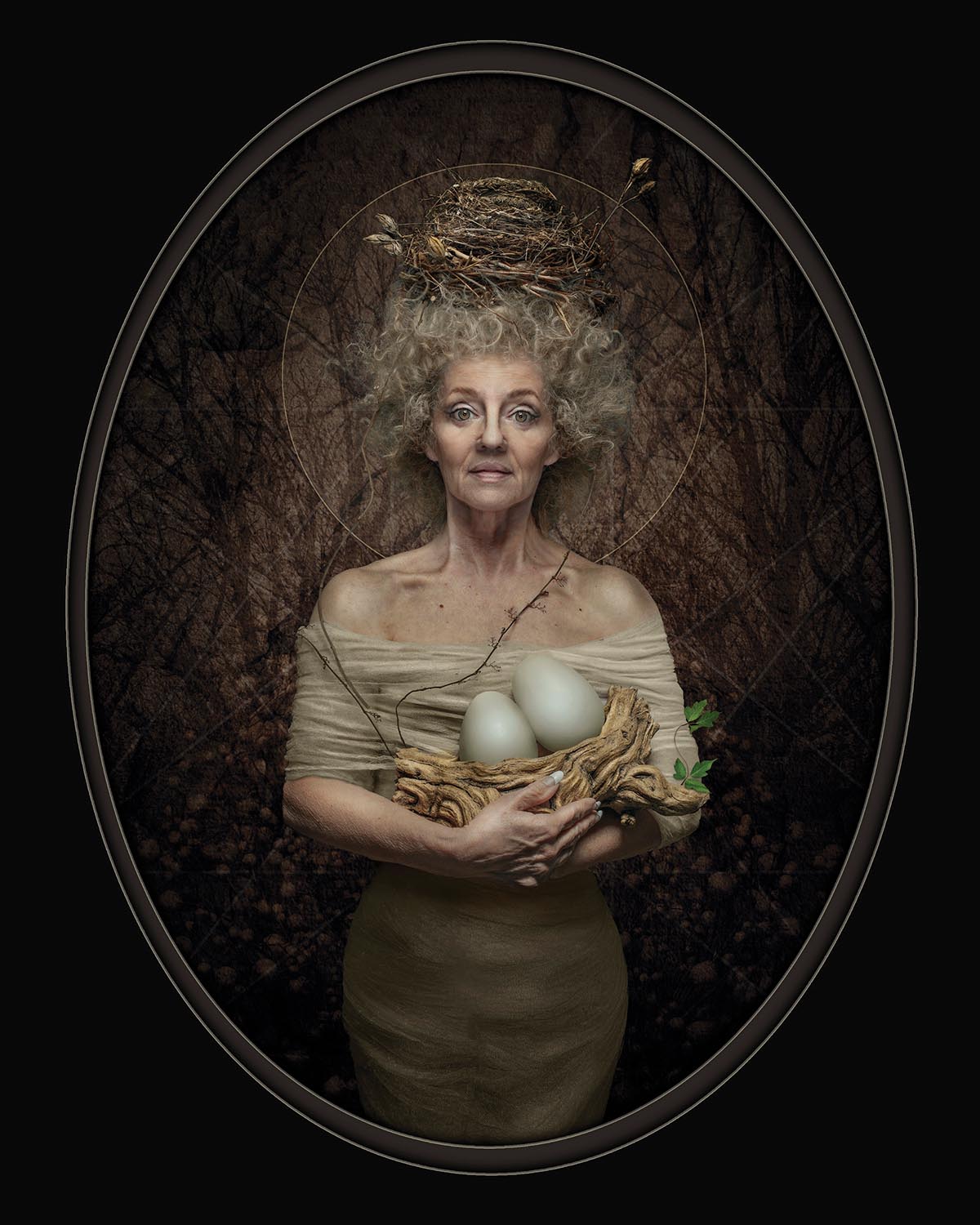
When Owen got an opportunity to photograph newborn twins at a client’s home, she relied on her $5 manual flash—“I just measure-metered it using the scale on the back of the flash”—and her Picture People experience posing newborns. The quality of her images resulted in the sale of a $1,300 package. “I got into the car and actually screamed with joy and crying because it was what I needed,” she says, not just financially but directionally, too. To provide the life she wanted for her son, she needed higher earnings, and that required she go into business herself “and do the whole thing,” she says.
The next serendipitous step was being denied admission to a national photography training program when they discovered she was a single mom and contended she wouldn’t be able to keep up with the accelerated program. Initially heart-broken, she now sees this setback as a giant step forward.
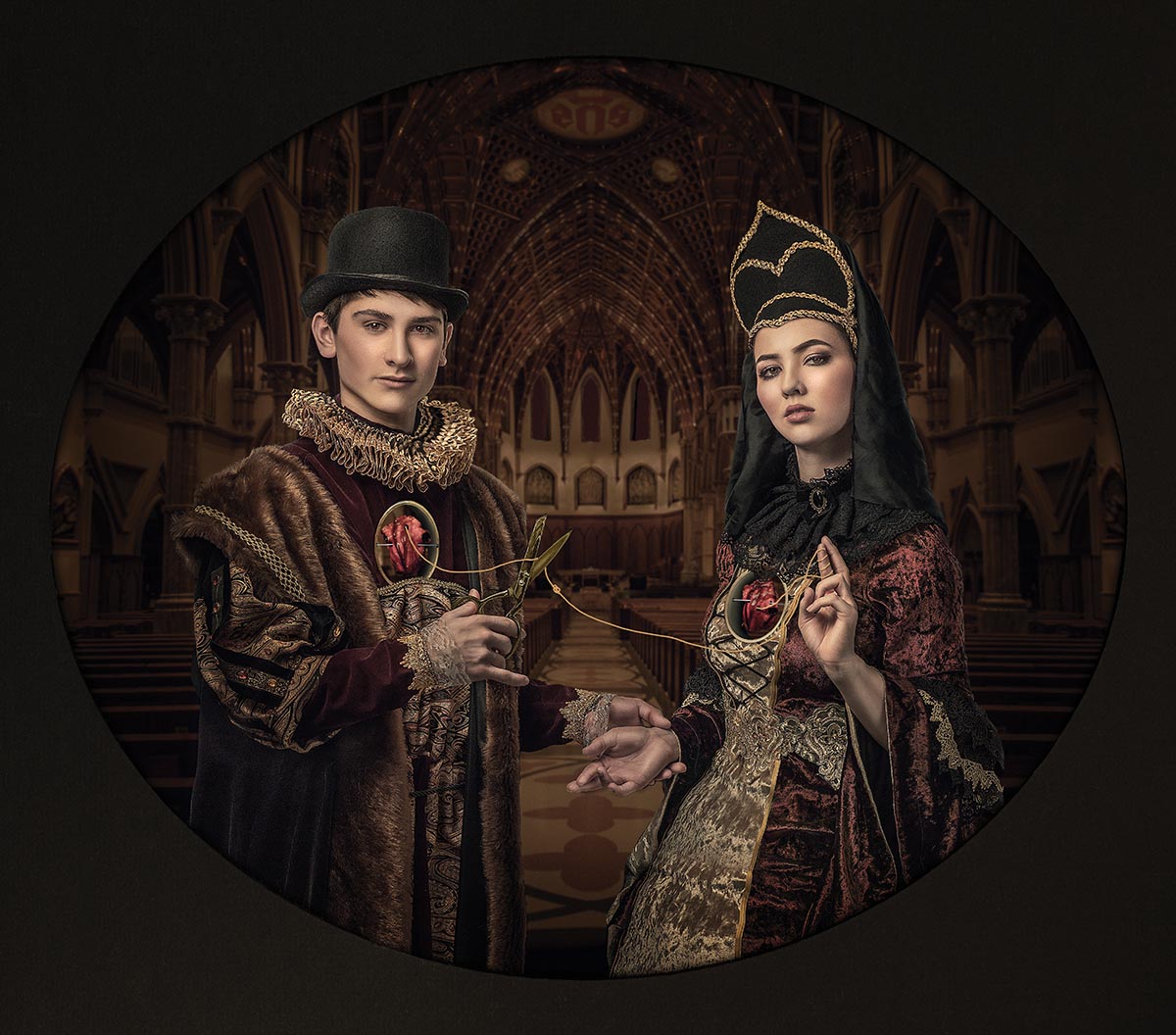
“Here’s the thing about photography, which they don’t tell you in school,” she says: “The basic rules of lighting, aperture, shutter speed, and ISO have not changed since it was invented. So, once you know that, you know it. The thing, especially with portraits and weddings, is learning how to connect with people, and you cannot learn that in a classroom. You have to learn that by doing it. I’m in the same place I ever would have been without the college debt.”
She was hired by Fred Fox Photography, a Chicago-area mega-wedding studio doing some 900 events a year. Initially doing backdrop photography, she was randomly assigned to assist Jeff Owen at a 2007 wedding. They married three years later and opened their studio in 2011, a romance and business that has flourished despite Jeff’s devotion to Nikon. “He thought at first that was going to be a problem but realized it’s a good thing because I can’t steal his gear,” she says.
Splitting their assignments and leaving her son with her mother, the Owens doubled the weddings they could cover per weekend. Jeff has worked more than 3,000, she says, but she gets an itch every three years to branch out. First was returning to her roots with family portraits; she has done more than 3,500 family and children portrait sessions, the bulk of that “from those early years when we’d do a ton in a day.” Three years later, they added boudoir photography, a genre that remains their most profitable per-session product. Up until 2022, 70 percent of their business came from weddings; that ratio turned upside down with the pandemic, and portraits now account for 70 percent of their sales.
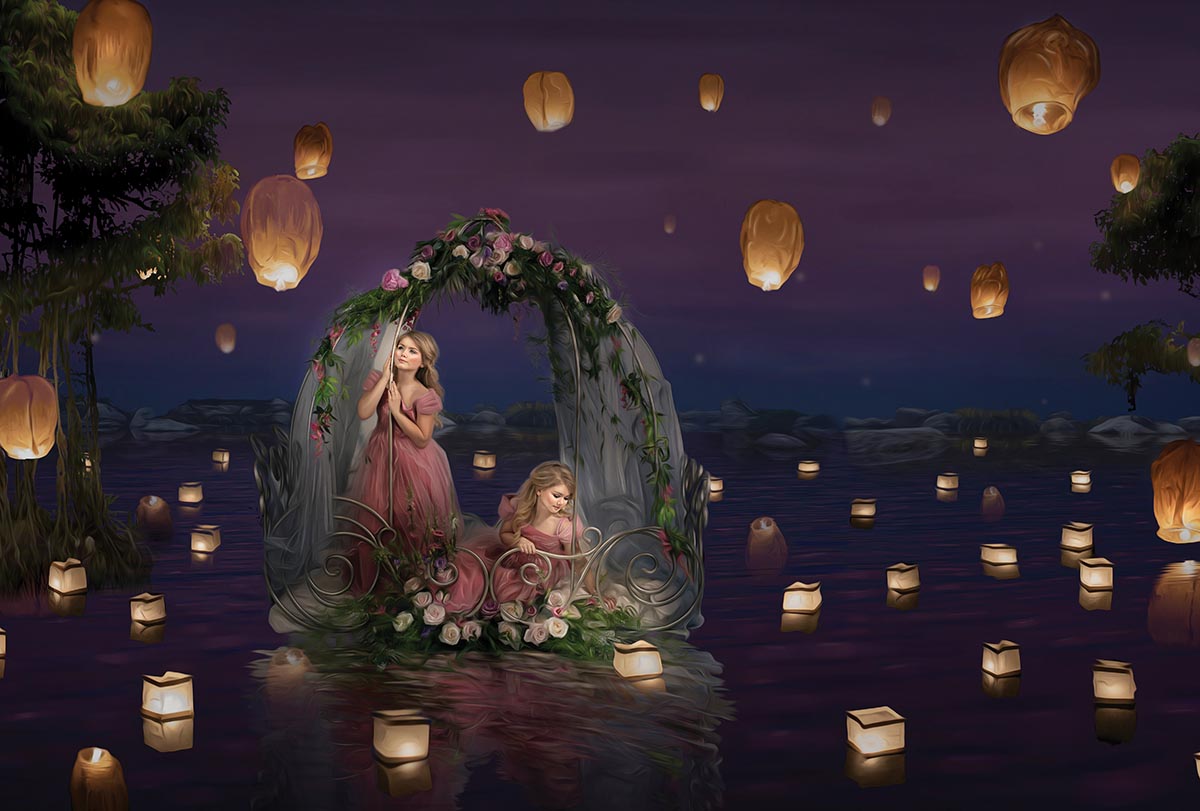
IMAGINATIVE STORIES
The pandemic also spurred Owens’ green screen photography efforts, thanks to the downturn of weddings and being stuck at home. Without that time availability, “I don’t know if I would be doing as much of it as I am now,” she says, “because now I’m kind of completely addicted to it.” She first dabbled in green screen photography in 2016 but felt the results never looked real. She saw the same thing in the work of Ben Shirk, M.Photog.M.Artist.Cr., when attending the digital artist’s 2017 workshop—the difference being that he wasn’t finished with his demonstration. As he continued, she saw authenticity fully evolve.
“It really encouraged me, when I’ve got these elements and they do not look like a photo at all, to keep going because that’s normal,” Owen says. “There is a long road between when you start and the final output.” She sketches her ideas before she starts composing them, sketches that put her back on track when she gets stuck. Along with guide images she gathers from the internet, her sketches also help her hair and make-up artists and costumers visualize what she wants.
Let’s face it, what she wants requires a lot of imagination. “Usually, the vision will come just from my head,” she says. “Most of my inspiration comes in moments of quiet. It’s in places where I’m stuck, like in planes and long car rides, and everything else melts away.” Walks also serve as a cauldron of inspiration. “There’s something about the circulation and the blood and stretching of your muscles. That’s where a lot of things will come from as well.” She keeps a notebook to sketch ideas so rudimentary she makes sure to label elements to remind her of her initial intent.
Photography competitions proved the driving impetus for turning her dabbling interest into a branch of her business. Upon deciding to get serious about the genre, she began studying what lay behind judges’ scores.
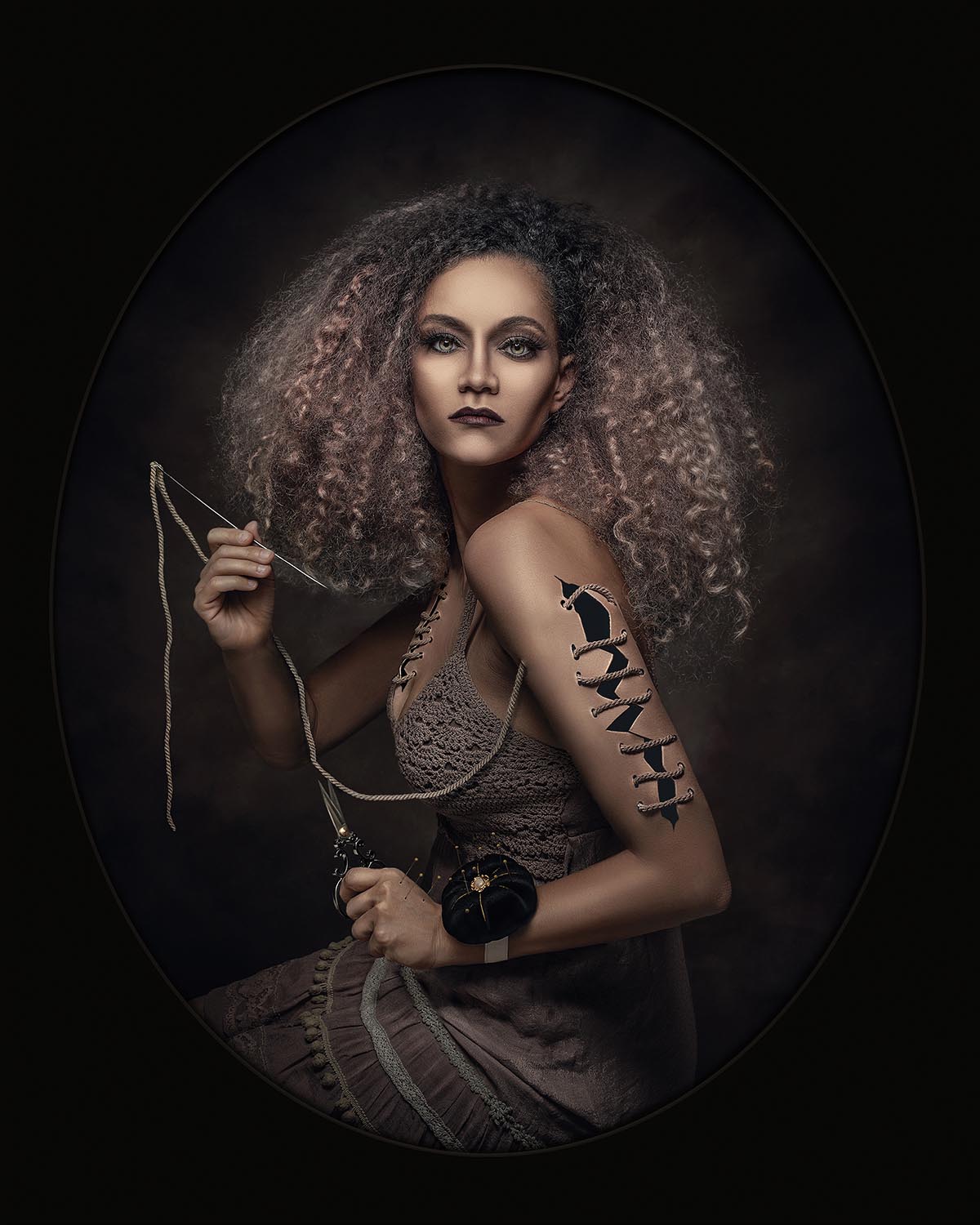
“Diving into that was kind of like an explosion in my brain because I realized that the images really scoring high are telling stories,” she says. “I realized, OK, I’m telling a story through my portrait, and it’s whatever story I want it to be—it’s not a wedding story or a newborn story, it’s anything I wanted to say. That just opened up a whole new world for me.” So new that the only influence her green screen experience has had on her wedding and portrait photography is applying more previsualization. “I don’t want a lot of crossover” between genres, she emphasizes.
She is proud to be extensively manipulating photographs with Photoshop. “I am not photojournalistic. Most of my stuff is a lie,” says the professional photographer. The artist, however, knows it to be her truth.
Eric Minton is a writer and editor in Washington, D.C.

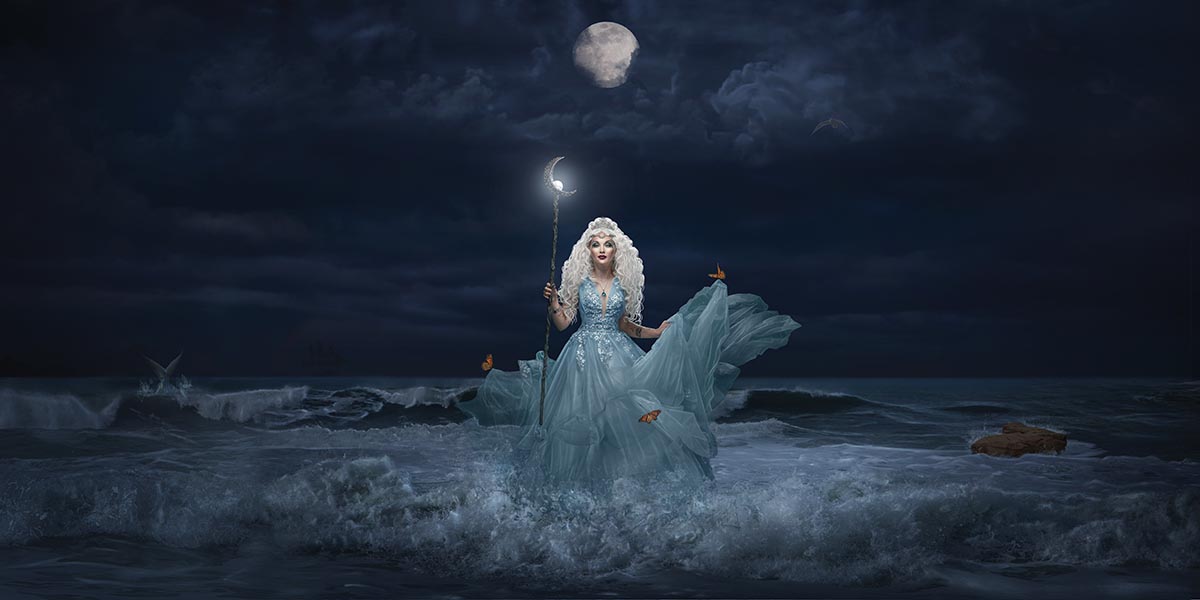
 View Gallery
View Gallery


